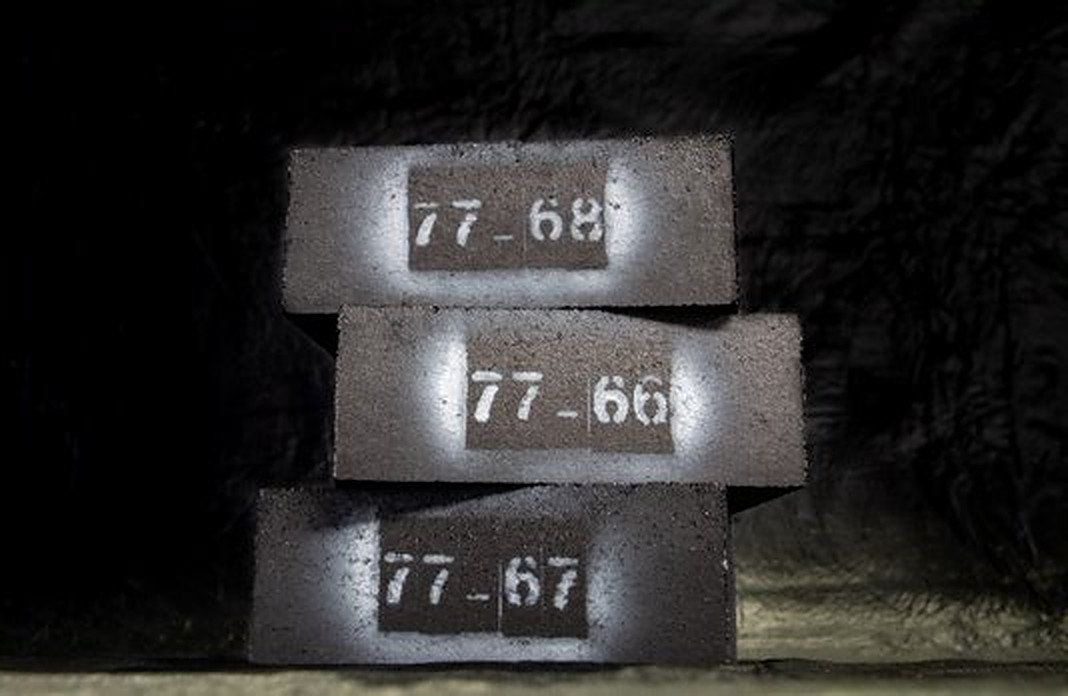A team of Engineers from Australia’s Newcastle University have developed and patented a thermal energy storage block, approximately the size of a large brick, which its inventors say is ideal for large-scale solar storage and repurposing coal-fired power plants.
The blocks, made largely from aluminum and graphite, are said to have a life expectancy in excess of that of PV without any degradation. One of the thermal block’s inventors, Erich Kisi, told pv magazine Australia that the idea for this new class of thermal energy storage materials, called miscibility gap alloys (MGA), came approximately 10 years ago when the team at Newcastle University were working on a thermionic converter (TIC), which generates electricity from the heat of concentrated sunlight when they “had the realisation that without thermal energy storage, the device would not generate at night, much the same as PV.”
The aluminum particles, given structural integrity by powdered graphite, provide the latent heat which melts and solidifies for many thousands of cycles. Though, not only aluminum particles, says Kisi, “We have many systems that operate at different temperatures. Aluminum is part of our core product that gives a concentration of energy release at 660 C. Other systems are available for temperatures of 420 C, 577 C, or even 1,085 C.”
Each block weighs around 6 kg and can store approximately 1 kWh of energy, so it is not a technology geared for domestic use.
“It is most efficient when used at a very large scale. For example, a good size for a pilot plant is between 20-50 MWh of stored energy. One area where it will be deployed is with solar to capture power that can’t otherwise be generated or dispatched due to inverter, grid or demand limitations when generation is at its peak (between 9am and 3pm) … Other areas include turning retired power stations into grid scale energy storage and dispatch facilities and the enabling of renewably generated power to be used 24/7 for industrial process heat.”
Kisi is also the CEO of MGA Thermal, the company with the patent which is now manufacturing these blocks with its Swiss partner E2S Power AG for piloting programs to repurpose European coal-fired power plants.
Popular content
“Our partners E2S are working closely with European power utilities to undertake large scale piloting,” said Kisi, who was tight-lipped about project specifics and the cost of individual energy storage blocks.
Materials and recycling
Graphite has the highest strength of any natural material, and its mining has been increasing in recent times in particular thanks to its use in lithium-ion batteries.
While Australia is not particularly known for its natural graphite reserves, Kisi says Australia does have good stores, but that what is more exciting is that “many new green technologies emerging have graphite of sufficient quality for our needs as a by-product of another process.”
What is more, Kisi told pv magazine Australia that it is possible use recycled graphite and metal particles from various sources in the production process. This means thgat the graphite segment of the coming tsunami of lithium-ion battery waste could be repurposed into this thermal energy storage solution.
Currently MGA Thermal is manufacturing 100 blocks a day, though Kisi believes the company will be producing 1,000 blocks a day within the next nine months, and has ambitions for 10,000 blocks a day “shortly thereafter and so on.”
This content is protected by copyright and may not be reused. If you want to cooperate with us and would like to reuse some of our content, please contact: editors@pv-magazine.com.



2 comments
By submitting this form you agree to pv magazine using your data for the purposes of publishing your comment.
Your personal data will only be disclosed or otherwise transmitted to third parties for the purposes of spam filtering or if this is necessary for technical maintenance of the website. Any other transfer to third parties will not take place unless this is justified on the basis of applicable data protection regulations or if pv magazine is legally obliged to do so.
You may revoke this consent at any time with effect for the future, in which case your personal data will be deleted immediately. Otherwise, your data will be deleted if pv magazine has processed your request or the purpose of data storage is fulfilled.
Further information on data privacy can be found in our Data Protection Policy.